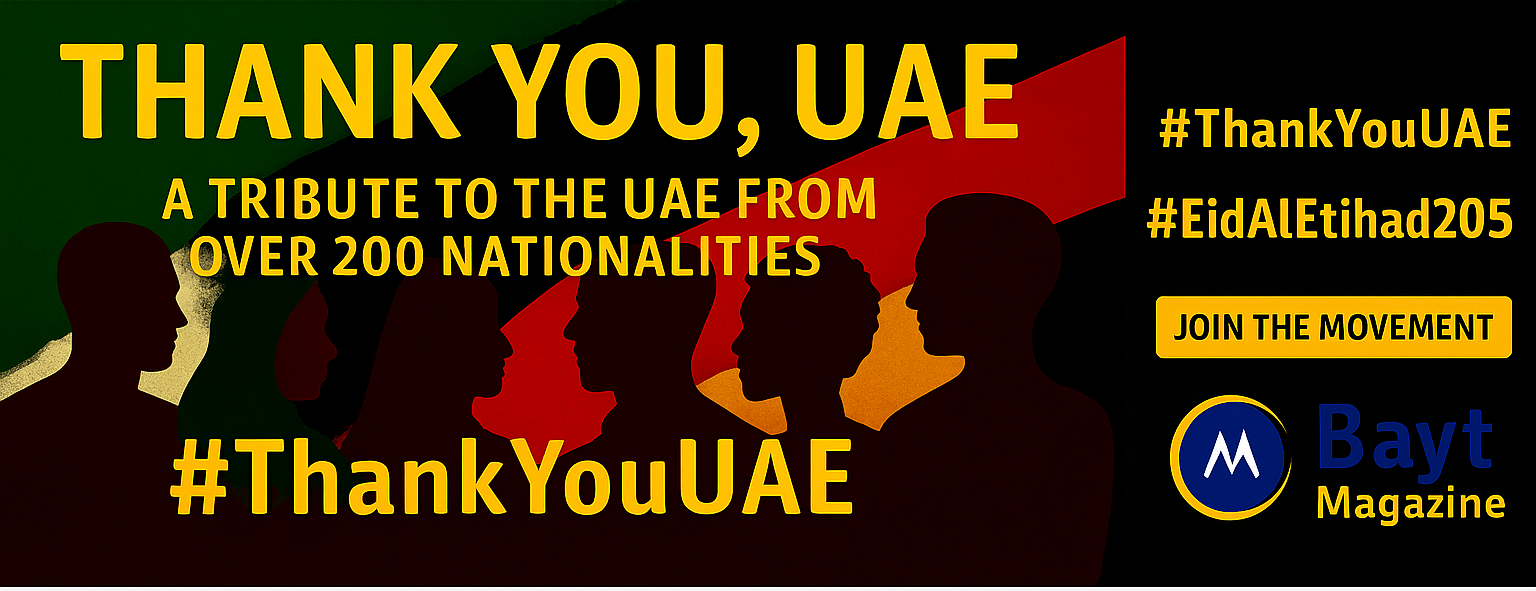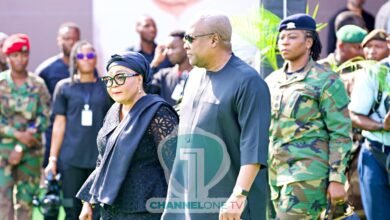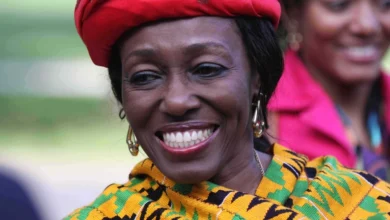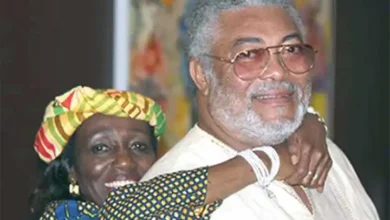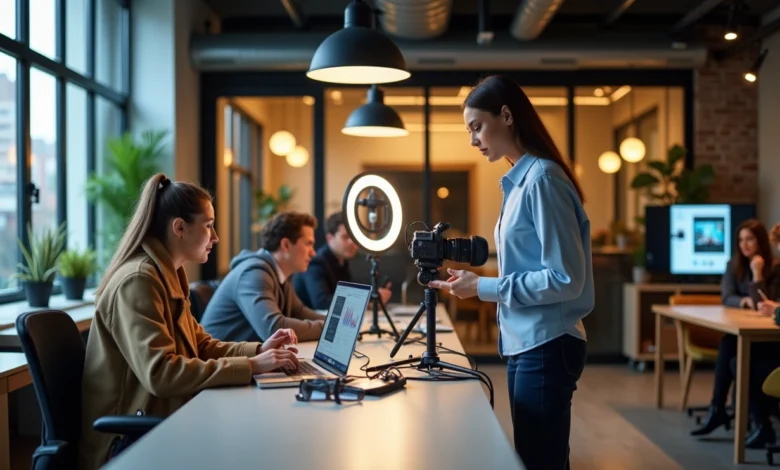
Global Creator Economy Soars Past $300B, Outpaces Traditional Media
The influencer economy has matured and expanded globally, with its value reaching about $250 billion. This thriving sector changes faster than ever, and Goldman Sachs expects the global creator economy to reach $480 billion by 2027. The GCC region shows remarkable growth as the number of social media influencers has jumped 75% in two years to 263,000 in 2025.
Consumer behavior in markets everywhere has changed because of the rising influencer economy. The GCC region’s consumers now see creator-led content frequently, with 62% of them exposed to it regularly. More than 35% say these creators affect their buying decisions directly. What started as a small trend has become a major economic force that grows faster and gets more audience participation than many traditional media channels.
Creator Economy Surpasses $300B in Global Valuation
Image Source: Market.us
The creator economy has hit a remarkable $300 billion milestone in global valuation. This dynamic sector has doubled since it first caught widespread attention. It now stands as a powerhouse in the digital age.
Goldman Sachs projects $480B by 2027
Goldman Sachs Research predicts the creator economy’s market could reach $480 billion by 2027, up from today’s $300 billion. These numbers match their forecasts for global digital advertising growth in the same timeframe. Deloitte backs up these strong projections, suggesting the creator economy will nearly double within three years.
Comparison with traditional media revenue
A historic shift is happening in media. User-generated content will generate more ad revenue than TV networks, cinemas, and news companies. Creator earnings through ads, brand deals, and sponsorships should jump 20% this year. The revenue from creators should reach $185 billion by 2025. The UK market shows a clear trend – digital channels like search, retail media, and social will dominate. These platforms should make up 81.4% of total ad revenue by 2025.
Key drivers of growth: platforms, monetization, and brand deals
The market’s explosive growth stems from several sources. Short-form video platforms bring in more advertising money, while influencer marketing budgets keep climbing. Brand partnerships remain the biggest money maker at roughly 70%. Platforms such as TikTok, YouTube, and Instagram Reels keep building their creator communities.
Goldman Sachs Research expects the global creator population of 50 million to grow 10-20% yearly over the next five years. The share of professionals earning above $100,000 annually should stay at 4%. The market looks promising – merger and acquisition activity in the creator economy jumped 73% compared to last year’s first half. This shows strong investor faith in the market’s future.
GCC and Asia Lead Regional Growth in Influencer Economy
The GCC region has altered the map of the global creator economy. Its influencer market shows exceptional momentum that reflects new digital consumption patterns throughout the Arabian Peninsula and beyond.
GCC sees 75% growth in creators since 2023
The Gulf Cooperation Council region now has 263,000 monetized social media influencers. This represents a 75% jump since 2023. These numbers are a big deal as it means that the regional growth surpasses global creator economy expansion. Global projections show an increase from 67 million creators worldwide in 2025 to 107 million by 2030. This growth touches all but one of the six GCC nations—Bahrain, Kuwait, Oman, Qatar, Saudi Arabia, and the United Arab Emirates. The UAE leads with bold initiatives like Creators HQ that wants to bring 10,000 influencers to the Emirates. The Asia-Oceania creator economy market stands at US$96.06 billion in 2025 and should reach US$276.42 billion by 2032, growing at a 16.3% compound annual rate.
Lifestyle, fashion, and finance dominate content categories
The GCC shows remarkable growth in specific content areas:
- Lifestyle and travel creators jumped 87%, from 31,000 to 58,000 since 2023
- Fashion and beauty creators surged 89%, going from 28,000 to 53,000
- Finance and business influencers grew 62%, covering topics like personal finance and artificial intelligence
The GCC’s creator landscape stands out with its multilingual, multi-ethnic nature that authentically represents modern Arab identity. Global brands entering Middle Eastern markets now see that local content strikes a chord with regional audiences. Creators blend tradition and modernity in unique ways.
Abu Dhabi emerges as a strategic hub for East-West collaboration
Abu Dhabi has become a key connector between European and Asian creator economies. Industry professionals call it “a perfect location for bridging Europe and Asia”. The emirate launched major projects like Yas Creative Hub, the region’s first custom-built space for content production industries. Through collaboration with YouTube, Creators HQ started the first YouTube Academy in the Middle East and North Africa. These projects are part of Abu Dhabi’s AED 31.58 billion investment strategy for cultural and creative industries. This steadfast dedication builds a detailed content economy that puts the UAE at the forefront of this fast-changing field.
Governments and Agencies Fuel Ecosystem Expansion
Image Source: ZAWYA
Government agencies now play a crucial role in shaping the creator economy. They build foundations that stimulate sustainable growth in digital content markets.
Role of ADIO and CMA in Abu Dhabi’s digital media strategy
Abu Dhabi Investment Office (ADIO) helps companies grow and reshape the scene across industries. The office manages an AED 535 million Ventures Fund that invests in startups and venture capital firms to spark innovation. The Creative Media Authority (CMA) works alongside ADIO with flexible regulations that streamline processes for content creators. CMA guides several organizations including Image Nation Abu Dhabi and Abu Dhabi Film Commission. It also runs development programs like Creative Lab and Arab Film Studio.
Infrastructure support: Yas Creative Hub and beyond
Yas Creative Hub serves as the heart of Abu Dhabi’s creative vision with over 700 companies and thousands of professionals. This first-of-its-kind media hub in the GCC provides:
- 100% ownership, zero personal income taxes, and waived license fees
- Custom-built offices, studios, and production facilities
- A dedicated Gaming Hub through a 10-year partnership with Unity
The hub aims to attract 16,000 professionals by 2030.
Public-private partnerships shaping creator-friendly policies
The government makes significant investments through public-private collaborations. The Central government has pledged AED 3.67 billion to help creators enhance their skills and expand globally. The WAVES Summit 2025 creates opportunities for joint ventures and co-productions. Industry experts value these public-private partnerships for the creator economy at AED 5.88 trillion.
Long-Term Brand Partnerships Redefine Creator Roles
Image Source: Neal Schaffer
Brand-creator relationships have evolved from short-term promotions to lasting strategic collaborations. This change reflects a maturing marketplace.
Shift from campaign-based to strategic collaborations
Deeper partnerships have replaced the traditional one-post, one-campaign approach. Brands now build communities that help creators develop their own brands instead of just promoting products. These programs give creators customizable storefronts, startup funding, and long-term sponsorship opportunities. The effectiveness of these strategic collaborations shows in the numbers – 65% of consumers now buy creator-founded products and services.
Creators as entrepreneurs and cultural narrators
Modern creators act as business owners rather than content producers. “Creators aren’t just creators anymore. They’re operators. Brand builders. Investors,” explains Georgie Holt, CEO of FlightStory. Entrepreneurial creators make 25% more than their social-first counterparts. Those who build on owned platforms see earnings up to 200% higher. This business-focused approach brings better results beyond money. Creator-CEOs report 42% better work-life balance and 49% greater creative freedom.
AI tools and analytics platforms enhancing creator output
Today, 91% of creators employ AI in their content creation process—a 7% increase from 2024. This number rises to 96% for full-time creators. Analytics platforms like CreatorIQ and HypeAuditor provide AI-driven intelligence. These tools help creators identify authentic audience engagement. The comprehensive multi-platform analysis turns insights into income effectively.
The creator economy has hit a remarkable $300 billion valuation milestone and continues to revolutionize media worldwide. Goldman Sachs projects this value to reach $480 billion by 2027, showing incredible growth potential. Content creators now generate more advertising revenue than traditional media networks and news organizations.
Regional growth numbers paint an impressive picture. Social media influencers in the GCC region have grown 75% since 2023. The Asia-Oceania market could reach $276.42 billion by 2032. Abu Dhabi has become a key bridge between European and Asian creator economies through projects like Yas Creative Hub.
Governments have moved from simply regulating to actively building creator ecosystems. Public-private partnerships valued at AED 5.88 trillion show how creators are now seen as major economic drivers. Brand partnerships have also evolved from simple transactions to strategic collaborations. About 65% of consumers buy products from creator-founded brands.
Creators do much more than just produce content now. Many run their own businesses as entrepreneurs, brand builders, and cultural storytellers. On top of that, technology speeds up their growth – 91% of creators now use AI tools to boost their output quality and efficiency.
The creator economy shows how content, commerce, and culture come together in new ways. This digital renaissance enables people to build worldwide audiences while creating unprecedented economic value. As traditional and digital media continue to merge, creator-driven approaches will shape the future of global media.


